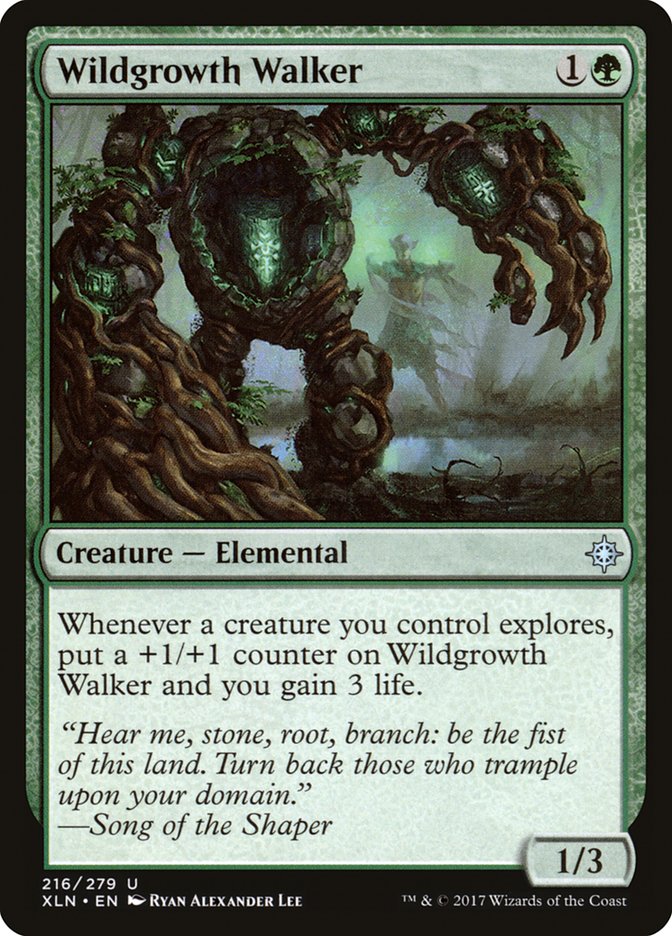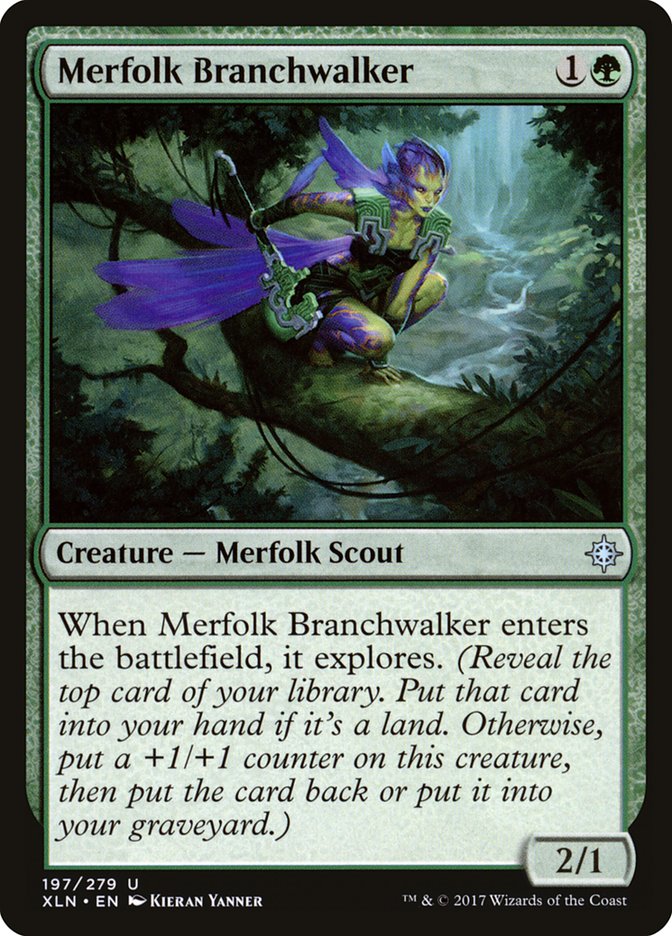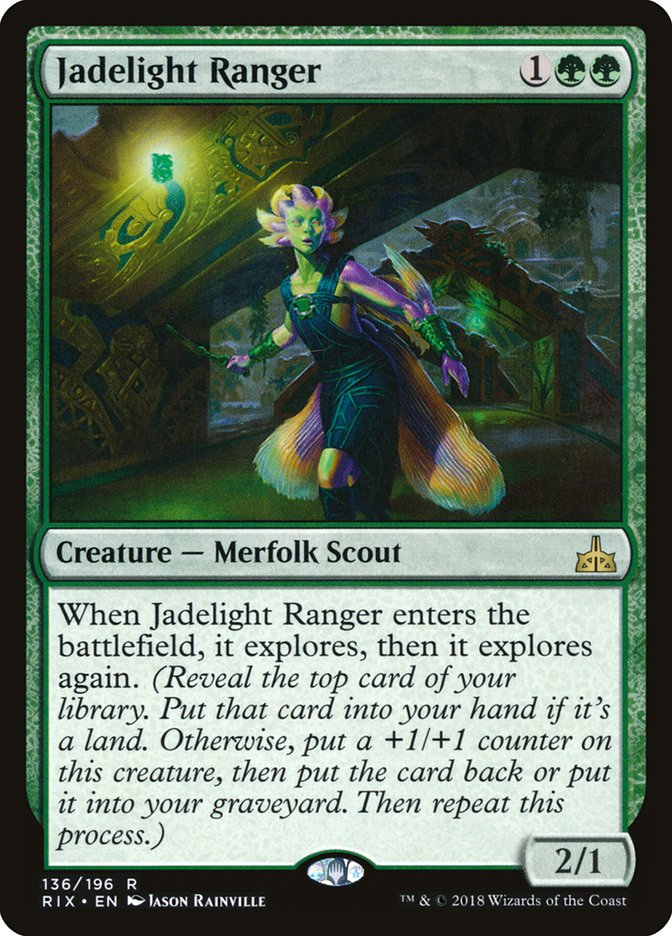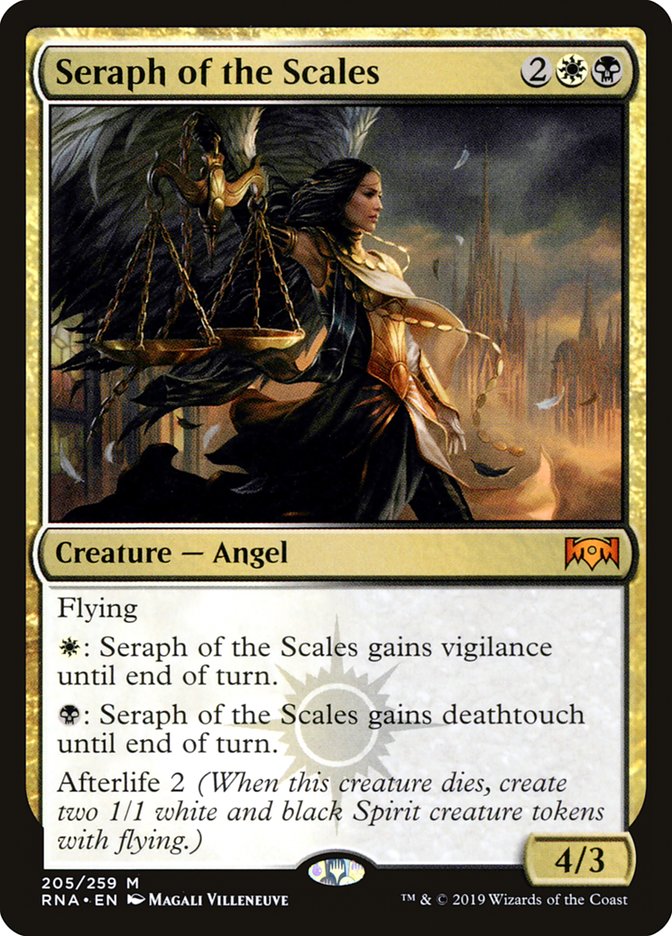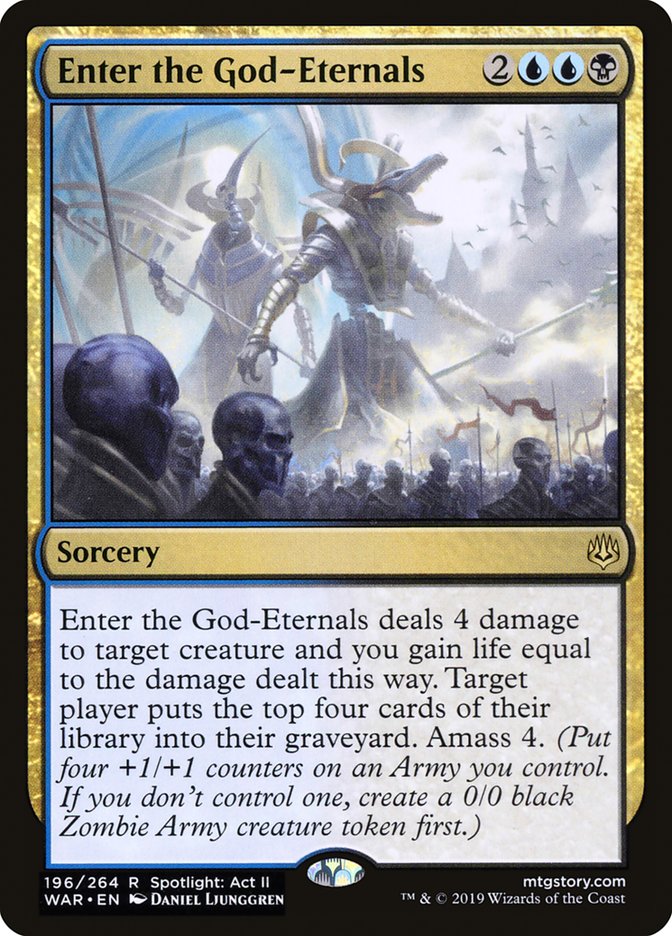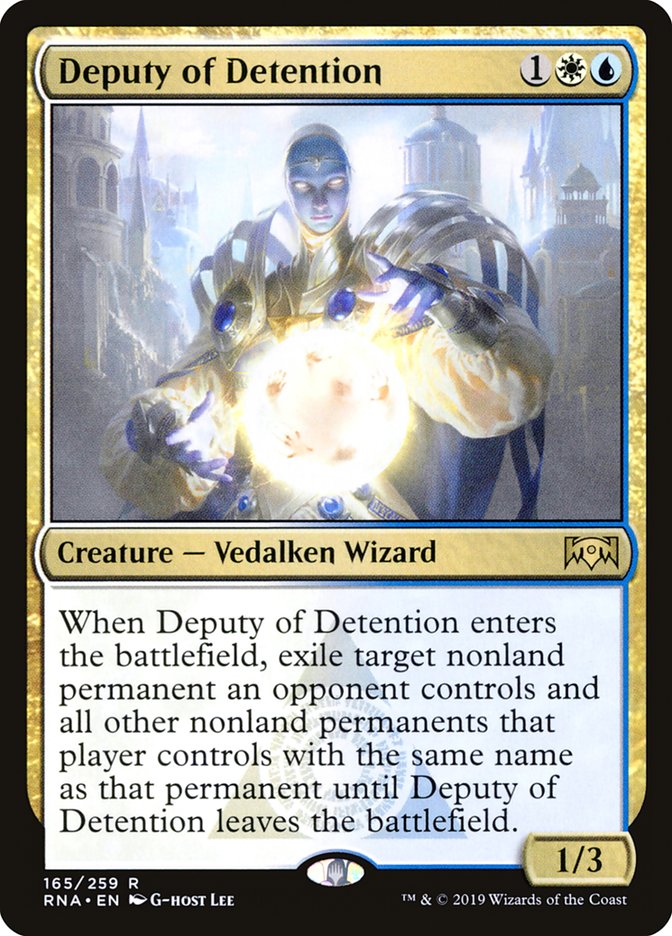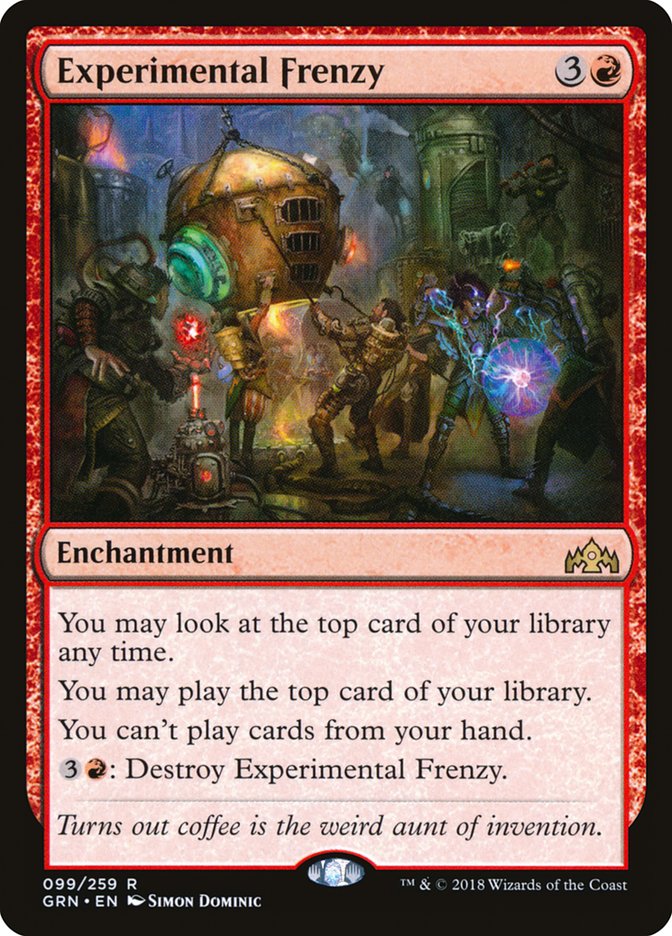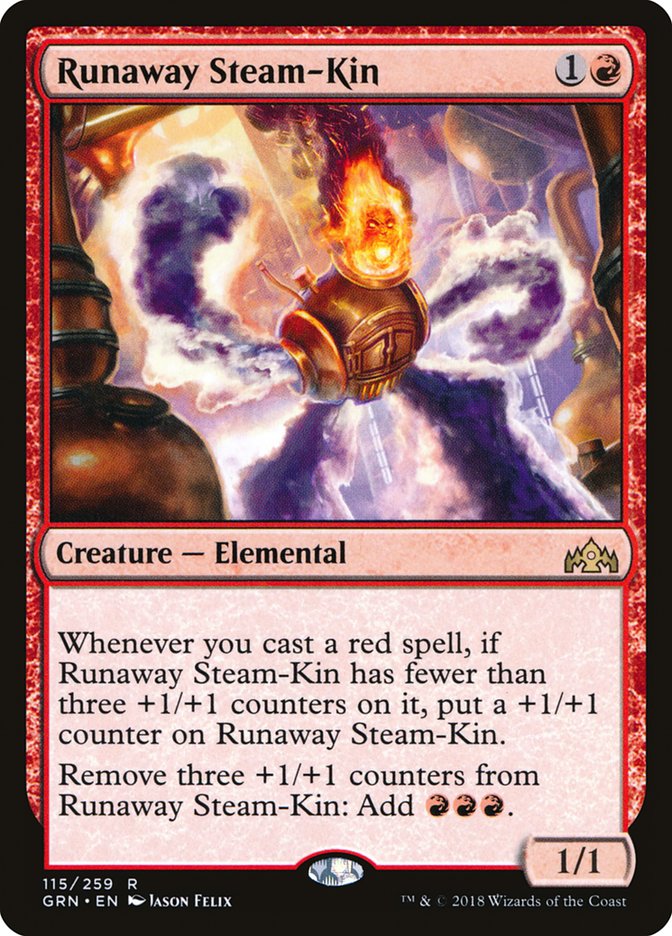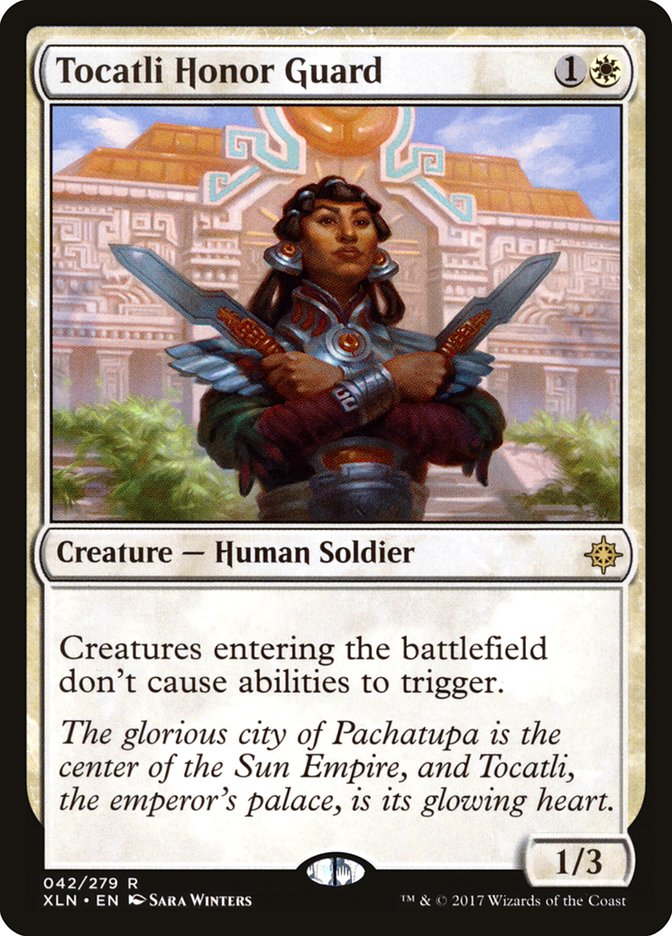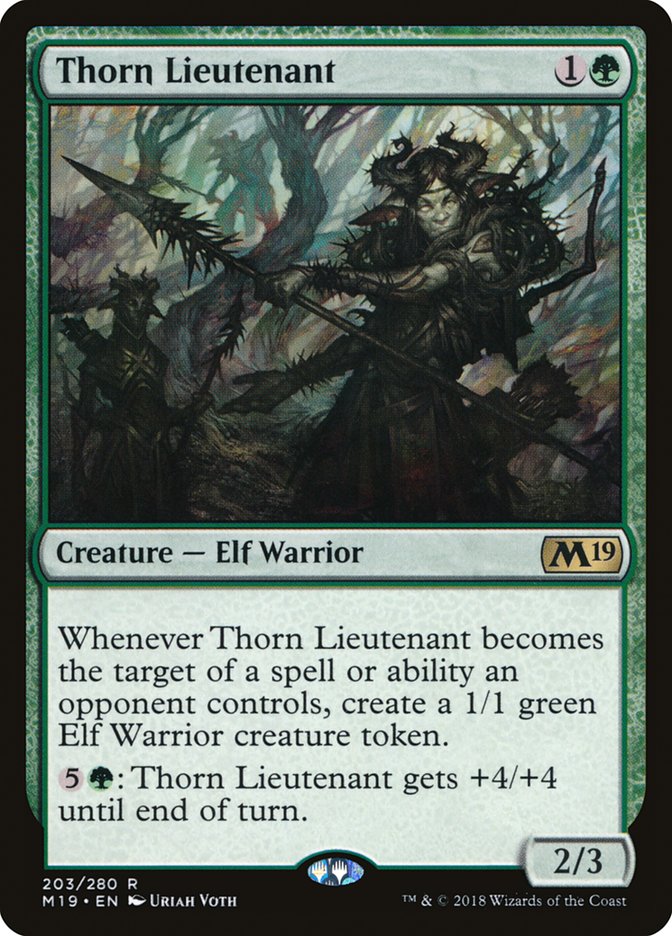Hey everyone! It’s been a while since I’ve written as I’ve just spent the last two weeks relocating to Washington State. No, I did not leave Star City Games completely and will still be writing weekly articles with the occasional side projects here and there. I just needed a little break, since moving is always more difficult than I think it’ll be. That’s not to say that Amber and I didn’t have a blast on our cross-country travels because it was a very fun experience overall.
The plan for today is to catch up on War of the Spark Standard and take a look at the metagame with a more holistic approach. I had to just jump into an already-evolving format thanks to Mythic Championship London being Modern and the move up here, so my usual biases towards midrange didn’t really take hold last week when I played my first match of Standard. In fact, I played Azorius Aggro in my first MPL Weekly match.
Before we get started though, I wanted to touch on some of the hot topics from the past couple of weeks. I didn’t get a chance to comment on the London Mulligan rule or Open Decklists at MC London, but I was able to listen to pretty much every Magic-related podcast and read most articles as we spent many hours in cars or hotel rooms. I guess I’m just eager to get into the discussion. I don’t think my opinions are that revolutionary, but also different enough for me to justify discussing them.
Open Decklists
As most of you should be aware, MC London was Wizards of the Coast’s first attempt at an open-decklist tournament larger than a Magic Online Championship Series or Worlds. Nine of the ten rounds, I got to know what my opponent was playing, which changes a lot. Many specific opinions came out about how open decklists help control decks, or themselves personally as a player, but that’s not really what we should be looking at.
Open decklists does many unique things to a tournament structure. From a broadcast perspective, I think the decision they made to keep Round 4 hidden was a mistake. The execution in London felt like a hedge to keep tournament integrity as much as possible. They only did that because once feature matches happened, those players would be at a disadvantage in the following rounds as their lists were public, thanks to the decklist extension on Twitch.
Instead of hiding this information until the last possible moment, they should just open it up sooner. This would allow players to hype their choices and also for WotC to do unlimited deck techs on Thursday with some of the game’s biggest players. It’s been a long time since I’ve seen Reid Duke talk about Jund on camera and I would be very excited to see that content.
From a player’s perspective, things get way more interesting. Open decklists aren’t about what players have but what they don’t have. Think about Minesweeper. You know there are bombs in some squares, but not in others. If your opponent has answers to all your strategies except for one, the match all of a sudden becomes about that thing. This doesn’t mean the debate is about linear or nonlinear strategies getting an advantage. What players should be thinking about is powerful versus non-powerful effects.
You’re trying to maximize the effect of what you do have, since an opponent will always be able to play around it. Take Primeval Titan, for example; just because they know you’re playing TitanShift doesn’t mean they brought the tools to defeat it. Obviously this is an extreme example, but it’s something I think about when going into the many open-decklist tournaments I have played in before. I always look for cards and strategies that can win games without too much synergy, as those tend to be more difficult to disrupt.
This philosophy isn’t an end-all, be-all sort of thing, but it is something to keep in mind if you play in an open-decklist event. Just think about how to try to be powerful, not cute. Also, odds are I will write an entire article about open decklist strategy down the road, but that day isn’t today.
London Mulligan Rule
I liked this mulligan rule a lot for Limited but hated it for Modern. Maximizing the consistency of opening hands is the exact opposite thing I want to happen to Modern. I like when games play out in unique ways and that’s going to happen in a format as degenerate as Modern. I think it would be fine if the format didn’t revolve around such powerful one-drops like Aether Vial, Ancient Stirrings, and Faithless Looting, but it does.
If this mulligan rule goes into effect, I’d really hope Modern gets a complete overhaul. Whether that comes from bannings or Modern Horizons, I don’t care. It just needs something, because I don’t want to play the same format I just played in London ever again. If nothing changes, I’ll probably just become an Ad Nauseam expert.
War of the Spark Standard
With those out of the way, we can finally talk about Standard! Today we’re going to look at things from two different angles. We’ll start with general impressions of how the format functions and then move into each archetype, where I’ll discuss what I like, dislike, and would change about decks if need be. Keep in mind I’m still sub-100 matches in the format, but I’ve spent a lot of time thinking about it over the past couple of weeks.
Standard is very dense in its effects right now, thanks to all the passive abilities on all these planeswalkers from War of the Spark. It’s just crazy how a static ability on planeswalkers can change so much about a game! Due to that, we’re seeing a shift away from cards that don’t interact with the game immediately. A great example is Wildgrowth Walker and the explore package rarely being seen anymore.
Sure, these cards put permanents on the battlefield, but they aren’t actually good against the other things happening in the format. They just don’t do enough to the games, as the early synergy is either ignored by Nexus of Fate strategies or easily dealt with by the Teferi, Time Raveler decks. It’s just too easy to go over the top of them and too difficult for the package to go under anything. Really, the only strategies these cards are good against are Mono-Red Aggro and sometimes Azorius Aggro, but only in a Golgari shell that utilizes another weak card in this format in Find // Finality.
Due to the power level of these three-mana planeswalkers, we’re seeing a shift towards playing strategies that can easily answer them without investing their entire turn into casting a card that does so, or simply ignoring them thanks to not being crippled by their effects. Mono-Red Aggro, Esper Midrange, and Izzet Phoenix are all designed to put early pressure on an opponent while also having the tools needed to stay along for the ride if things start going badly in the mid-game.
This shift in gameplay has me thinking that passive strategies like Sultai Midrange and Esper Control are just not good enough for this format. They still have good matchups and they can still win, but they both can stumble in the early-game, which I believe is a death sentence for trying to win in this format. I know I’ve said it for years now, but control decks just aren’t that good in Standard and I don’t really understand why Esper Control is still so highly played. If you don’t like combat, just play a good Nexus of Fate list!
Let’s go over the decks with these initial assumptions in mind and ranking them from first to worst.
#1: Esper Midrange
Creatures (11)
Planeswalkers (10)
- 3 Teferi, Hero of Dominaria
- 2 Liliana, Dreadhorde General
- 3 Teferi, Time Raveler
- 2 Sorin, Vengeful Bloodlord
Lands (25)
Spells (14)

I initially didn’t think Esper Midrange would be my pick for best deck in Standard, but the strategy has impressed me for basically all the same reasons I just talked about. The deck has a density of good cards to play on every spot on the curve and doesn’t get neutered by any planeswalker passives. It doesn’t need to cast cards on an opponent’s turn, nor does it draw extra cards. These crucial traits make this deck so good.
I’ve talked a lot with Brian Braun-Duin about Esper Midrange and he convinced me of a very important rule about the deck – don’t play the bad cards. It’s pretty simple: don’t play cards like Discovery // Dispersal, Seraph of the Scales, Enter the God-Eternals, or Deputy of Detention. While these cards have their moments, they just aren’t powerful enough and are extremely situational. There’s nothing inherently broken about this strategy, so playing too many situational or low-impact cards in the maindeck can cause for some very lopsided games that are not in your favor.
There’s also a common trend when it comes to midrange decks in the early stages of a Standard format. They’re often designed with a lot of cool synergies, but slowly those cute factors get replaced with generically powerful effects. This shift usually involves a better understanding of the “answer” formula, which allows these decks to be designed better, as they don’t need to lean on their own synergies to win. We may be on that path right now, as the format’s still young, but I’d keep this in mind when you’re working on tuning the strategy.
This is my pick for not only the best choice right now but also the deck you should pick up if you’re unsure what to play. The games can be difficult to pilot or very straightforward, but compared to the rest of the format, Esper Midrange is very good and fairly easy to pick up and play.
#2: Mono-Red Aggro
Creatures (20)
- 4 Fanatical Firebrand
- 4 Ghitu Lavarunner
- 4 Goblin Chainwhirler
- 4 Viashino Pyromancer
- 4 Runaway Steam-Kin
Lands (20)
- 20 Mountain
Spells (20)

Mono-Red Aggro will eventually lose ground in the format, but I still consider it one of the stronger choices until decks are properly tuned. That is, of course, if you keep playing with Experimental Frenzy. Seriously, don’t buy into this Chandra, Fire Artisan hype. Sure, Chandra won’t lock you out of your hand or cause those super-frustrating games where Experimental Frenzy completely screws you over, but the strength of this deck is in the games where it doesn’t. I just can’t see a world where I want to put Runaway Steam-Kin in a deck without the ability to do degenerate things with it.
If I register Mono-Red Aggro, I’m not trying to reinvent the wheel – the deck has its strengths and it has its weaknesses. There’s really no tuning it to find its perfect form that beats everything. In fact, I strongly assume that the more tinkering you do to the deck, the worse off you’ll be.
#3: Azorius Aggro
Creatures (26)
- 3 Adanto Vanguard
- 4 Skymarcher Aspirant
- 4 Snubhorn Sentry
- 4 Benalish Marshal
- 4 Dauntless Bodyguard
- 4 Venerated Loxodon
- 3 Law-Rune Enforcer
Planeswalkers (4)
Lands (20)
Spells (10)

I had to play my first MPL Weekly match not 24 hours after I moved. I was stressed (to say the least), but thankfully my Mythic Champion London practice partner had my back. Huey had worked on this deck with Reid Duke and graciously gave it to me for my match. I hadn’t even played a single game with it at that point, which is why I found coverage so funny when they talked about how much testing and preparation I put into each facet of my Magic game. While usually true, it wasn’t close to reality for this specific match.
That doesn’t take away from the strategy, though, and in fact I think it speaks volumes that this was the deck I chose. I didn’t do so just because people I respected gave me the list, either; I just think it’s extremely well-positioned right now. Maybe you can lower the countermagic now, as there’s less Simic Nexus running around, but for the most part, this deck is spot-on.
The biggest exclusion from the deck is Tocatli Honor Guard. For one, it’s just not needed now that Sultai Midrange isn’t a big deck, and also that Bant Midrange isn’t that good of a deck (but it’s also never been that good in those matchups anyway). Bad matchups are bad matchups, and if these green midrange decks want to beat Azorius Aggro, they will. It’s better to ignore them, hope to get lucky, and be better-prepared for the other matchups.
I won’t say this deck is infallible, as it’s clear that it can be beaten if you have enough tools for it, but at the same time it’s just always a strong choice when the entire metagame isn’t targeting it. The deck just has some very gross starts and can also grind out some odd games, with cards like Legion’s Landing and Law-Rune Enforcer giving the deck just a little bit of reach.
#4: Esper Control
Planeswalkers (7)
Lands (26)
Spells (27)

I get it. Esper Control is very popular. It’s probably the most popular deck right now and control is usually overplayed. I can go on and on in my articles about why I don’t think control is that good, and you can go back to the times where I did in fact play it to show my hypocrisy. It’s a song and dance I’ve been a part of for many years, but I always find solace in the fact that I usually do very well with control when I play it.
I only play control when I think it’s far and away the best deck, and it usually is when I do. However, control is not the type of deck you want to play unless it’s simply the best deck in the format, because it’s too easy to pick up just enough losses to not win the tournament. Sometimes you have mana issues, or you draw the wrong half of your deck, or they do just enough to keep you from accomplishing your goals. A lot must go right for you to win a large amount of games in a row with a control deck, and the format is often filled with way too many decks to properly design your list to cover them all.
There’s also an argument that control gets as many free wins as any other deck out there, but I don’t buy into that. Sure, there are some very easy games to be won, but that’s usually because an opponent stumbles and the control deck draws fairly well. Those games don’t happen as often as one would like, and odds are that your free win will be given back later in the event to a stumble on the other side of the battlefield.
I don’t know what more to say. Maybe I’ll eventually write an entire article about this topic, but it’s not going to change anyone’s mind. People will still play control because that’s who they are and that’s fine. I just can’t endorse it in my content, even when I subscribe to the idea that everyone can make their own decisions. This is a game, after all, and people do what is the most fun.
#5: Simic Nexus
Planeswalkers (5)
Lands (25)
Spells (30)

I thought Nexus of Fate needed to be banned until I finally got to playing with War of the Spark Standard. I was animated about it and actively said so all the time, but that’s not the case anymore, as I’ve found Narset, Parter of Veils and Teferi, Time Raveler to be just what the doctor ordered to keep this deck in check. Mono-Red Aggro is also an annoying matchup for Simic Nexus, which helps keep it in check.
I can’t say I’ve tested Dylan Hand’s Thorn Lieutenants yet, but theoretically they sound interesting. They help pressure these planeswalkers while also blocking some of Mono-Red Aggro’s early creatures. Admittedly, I don’t know if the card comes in against Mono-Red Aggro or not, but it seems like it does looking at his list. I don’t want to speculate too hard on how Dylan sideboards the deck, though, as he’s been working on it for quite some time.
Personally, I’ve given up on Simic Nexus as a deck choice. I think the deck is fine, but there are just so many hard-to-fight permanents running around that I’ve started looking towards a third color to help me with the strategy. My Nexus of Fate choice as of right now is Bant Nexus and I’ll be going over that deck in more detail later this week. While I still don’t think I have the perfect list, I still find it very fun and interesting to play.
Creatures (1)
Planeswalkers (6)
Lands (26)
Spells (27)

I also don’t think it’s that annoying now that Tamiyo, Collector of Tales exists. While this card makes the deck way better than it was before, it also does something nice for the gameplay by proving a deterministic kill is coming way more quickly than previous iterations of the deck. I used to hate having to sit around for five-plus turns just to make sure they “had me,” but now it’s only two or three turns before it’s proven they will kill me.
Maybe that’s a bad way to look at a combo deck, but in all honesty, public perception of a deck often falls on how enjoyable it is to lose to. Storm? That’s fine. But don’t you dare Blood Moon me on Turn 1, you monster!
#6: Bant Midrange
Creatures (29)
- 4 Llanowar Elves
- 2 Shalai, Voice of Plenty
- 2 Knight of Autumn
- 2 Deputy of Detention
- 4 Hydroid Krasis
- 4 Growth-Chamber Guardian
- 4 Frilled Mystic
- 4 Incubation Druid
- 3 God-Eternal Oketra
Planeswalkers (7)
Lands (24)

I could easily eat these words, but I just think this was an interesting deck for Week 1. Even though Bant Midrange put two people into the Top 8 of SCG Richmond, I still consider Esper Midrange a better deck. I don’t even think I’m putting my neck on the line here because Bant strategies have to be very good to be competitive in Standard, since the color combination tends to have a weak sideboard. Esper on the other hand is by far the strongest combination for good sideboards, as you have access to so many unique effects that are also extremely cheap.
It’s all right if you find this take contentious. We’ll most likely have the verdict in a week or two, as the deck will either fade into the night or keep putting up results.
#7: Izzet Phoenix
Creatures (12)
Planeswalkers (1)
Lands (21)
Spells (26)

I still don’t know what to think about this deck, but it has now won two Mythic Championship Qualifiers online. That could be due to the fact that Nexus of Fate is difficult to play on Magic Online – which is what I think – and why I need to play the deck myself this week to make conclusions on it. My gut says you should stay away from the deck for the following weeks, but take that advice with a grain of salt for now. If this is what you’re on and you like your results with it, please don’t listen to me. But if you were thinking of picking it up outside of Magic Online and respect my opinion, I’d say just play something else. We’ll know more in the next couple of weeks about whether this deck is a flash in the pan or not.
Anyway, that’s all I have for today. Like I said earlier, I’ll be doing a primer on Bant Nexus later this week. While I’m still unsure if the deck has legs, I find it to be so much fun that I just have to get it out to y’all. I hope this article tides you over until then!



